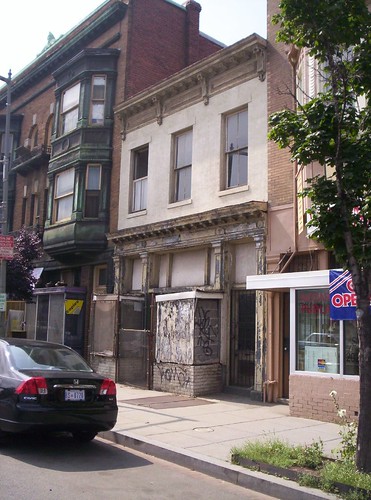More on restaurant rents
This article from the Boston Business Journal, "Scouting restaurateurs finding Hub rent unappetizing," challenges a point that I have stated, that restaurants will spend up to 15% of their revenue in rent, since they have a higher revenue volume compared to an "average" retail establishment that sells goods less frequently. The article says 6-8% which is the range of the Main Street metric of 4%-10% of gross revenue to be spent on rent.
From the article:
For more than a year, Luis Morales has been scouting locations to open a 100-seat restaurant either in the South End or Back Bay. But the 5,000 square feet necessary is scarce and the leases way too high for his accounting. Though an independent restaurateur, Morales is among the many restaurateurs -- independent and chains -- in the casual and fast-casual segment who are getting squeezed out of an ever tightening retail real estate market in Boston. The rents are too high and the desirable spaces so few it's increased competition among lookers and, in some cases, is forcing operators to turn to the suburbs for their locations.
"(Restaurant sales) are flat and landlords want to go up in rents," says Charles M. Perkins, president of The Boston Restaurant Group Inc., a restaurant brokerage firm based in Boxford. "I've never seen it so tight and competitive as I've seen in downtown Boston."
Morales says some landlords were asking not only exorbitant rents (in one case, $15,000 for 4,500 square feet), but also asking for fees for common areas as well as a percentage of the business.
"That's not acceptable," says Morales, the former chef de cuisine of Via Matta and Radius. Morales says he is looking at city spaces where restaurants are still operating but want to sell because they can't make ends meet. Restaurant operators operate on such tight margins that their leases should not exceed 6 percent to 8 percent of their sales -- a common industry figure.
"Once you get above the 7 percent to 8 percent mark, it becomes difficult," says Larry Reinstein, president and CEO of Fresh City Concepts LLC in Needham, which operates Souper Salad and Fresh City stores. Reinstein did not renew his Souper Salad lease at 126 High St. when it expired last month because the asking price per-square-foot was too high. The Wilder Cos., which is leasing the approximate 3,800-square-foot space, did not disclose the asking rent.
Though Fresh City operates four downtown Souper Salad locations, and three Fresh City stores in the city, including Boston Logan International Airport, the company growth is in the suburbs, says Reinstein, who just opened a Fresh City in North Andover....
______
This is relevant to the Public Hearing before DC City Council on Bill 16-555, "The Historic Neighborhood Retail Business Property Tax Relief Act of 2005," which I signed up to testify on. I think the idea is good, but is misdirected as it focuses not on all such properties, but only those owned by one owner for at least 20 years. (That hearing is listed in my online calendar in the right sidebar, which reflects events that I will be or intending to attend.)
 Will the slumlord owner of this property get to benefit from the "Historic Neighborhood Retail Business Property Tax Relief Act of 2005," if it passes as is currently written? This property, at 406 H Street NE, has been vacant for at least 20 years, and has had the same owner for all that time.
Will the slumlord owner of this property get to benefit from the "Historic Neighborhood Retail Business Property Tax Relief Act of 2005," if it passes as is currently written? This property, at 406 H Street NE, has been vacant for at least 20 years, and has had the same owner for all that time.Note that for some of these people, they would benefit by having been slumlords for much of that period.
See my previous blog entry,"Forcing Displacement by the disconnection of tax assessment models from public policy goals" for more on this topic.
Index Keywords: ?



0 Comments:
Post a Comment
<< Home